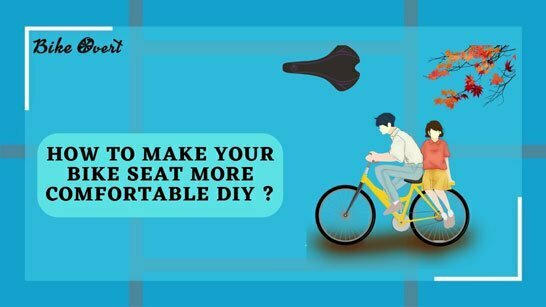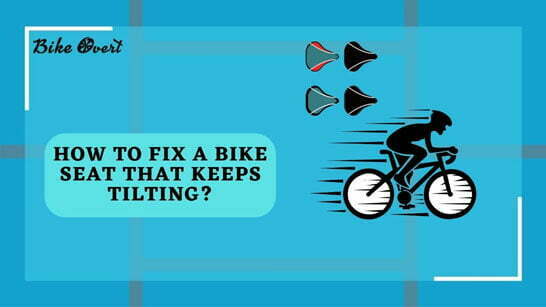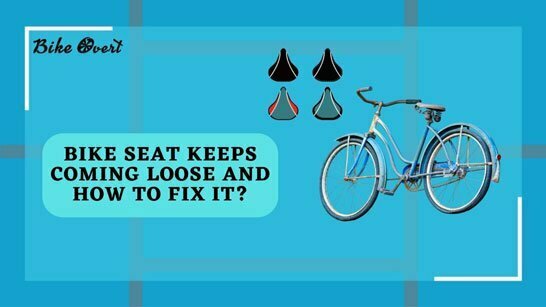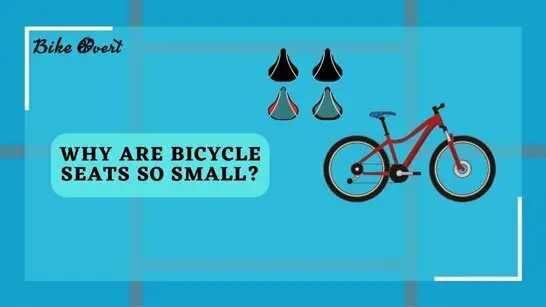Why does my bike seat keep tilting? How do I stop my bike seat from tilting? How do I stop my bike seat post from slipping? What is the best angle for bike seat?
A bike seat consists of a saddle and a set of poles. The saddle is the part you sit on and the poles keep your legs in position. These two parts work together to keep you upright and comfortable. However, if the saddle is not properly adjusted for your height, it can cause the bike seat to tilt back or forward which would make cycling more uncomfortable.
Bike seats are sometimes tilted because the bike needs to be fixed or there is a glitch in the alignment of the bike. However, most of the time, if you keep tightening your saddle screws, they will stop tilting. This fix only works if the bike is not too old and has little damage to it.
Sometimes, it is part of an issue with your body’s positioning on the bike. Some people may need more cushioning under their sit bones while others may need less.
Why does my bike seat keep tilting?
There are various reasons why a bike seat tilts. Different people use their bikes differently so some have different issues than others. The first thing that should happen when you notice this problem is to check for any loose bolts holding the seat post down.
If these are tight then tighten them up until the seat stops moving around. I am telling you some major reasons to tilt a bike seat.
Poor quality bike seat
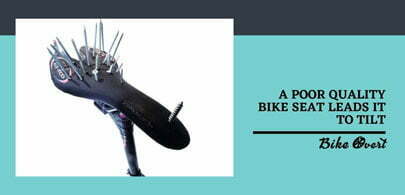
Bike seat keeps tilting for Poor quality bike seat. There are a few reasons that a bike seat can end up not staying upright, but the most common culprits are improper installation and poorly made seats. In order to make sure you avoid these problems, always make sure to check the installation instructions before attaching the seat to your bike.
Bill had always enjoyed biking before he moved to the city. However, while the city had many bike lanes, he noticed that his seat was no longer staying up. Upon further inspection, he found out that the seat was not of good quality and had bent in the middle.
He replaced it with a new one, but after a few days of use, it once again tilted to one side. It seems like Bill is not alone in his experience and others notice this problem as well.
Wrong bike seat placement
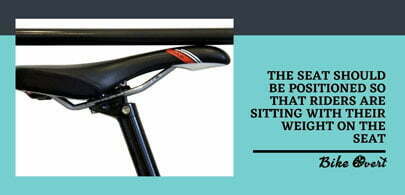
Bike seats are often too low or too high for the rider’s height. The seat should be positioned so that riders are sitting with their weight on the seat, rather than on their hands. It is important to remember that there are many factors that can create a bike seat tilt, including the person’s weight distribution and strength.
Knowing how to properly position your bike seat will ensure you have maximum comfort while cycling.
Person’s weight distribution
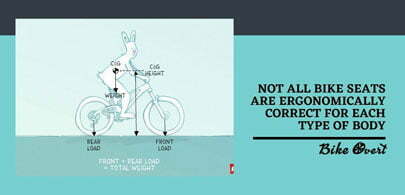
There are many different types of bike seats on the market today, but not all are ergonomically correct for each type of body. For riders who have a weight distribution issue with their seat because the tilt is too much, you can buy specialty seats that are made to provide more padding in the front or back to help keep your seat upright.
Many people ride on a bike and experience pain in the back, hips, and legs. The reason for this is that the seat of the bike is not properly aligned with their weight.
The seat of the bike should be either parallel or tilted forward slightly to make sure that all of their weight is distributed onto it.
Many people purchase bikes without knowing how they work and end up not adjusting the proper positioning of the seat.
Bike seats are not tightened down enough
One of the most common reasons for a bike seat to keep tilting upwards is because it is not tightened down enough. The seat should be secured against the front and rear rails and not be able to tilt more than 1°, but many seats tilt much higher than that.
A few other factors can contribute to this problem as well, such as an uneven seat rail or seat post, but tightening the seat down will fix the majority of issues.
It hasn’t been replaced in a long time
Bike seats are usually made of hard plastic or metal, and because they haven’t been replaced in a long time, they can make you uncomfortable. The seat slides forward on the frame when you lean your weight on it, which causes the tilt.
It’s hard to believe that bike seats can be more than a year old and need replacing. But the fact is, this plastic part of your bicycle can wear and break and cause your seat to tilt forward or back. If you notice any problems with your seat you can replace it immediately.
How do I stop my bike seat from tilting?

The average person spends eight hours a day sitting, and for cyclists, that statistic rings even more true. Many factors contribute to this persistent reality: the long commute to work, the workout class after work, and even just trying to get in some time on social media.
Bike seats are designed to put you in an upright position. They also provide ample support and padding so your butt doesn’t feel sore or numb when you’re done riding.
After riding a bike for an extended period of time, many riders will notice that their seats have lost contact with the ground. This can be a huge annoyance because if the seat tilts too far to one side then it will be difficult to control the bike. There are a few things that you can do to fix this problem.
First, you should make sure that your saddle height is adjusted correctly. Second, you may need to adjust the angle at which your pedals attach to the frame. Third, you might want to consider replacing your tires as they could be worn out. Finally, you may just need to replace your entire bicycle!
If you want to know more about stopping the bike seats from tilting then you can read this article. The article is dedicated to solving the problem of tilting a bike seat.
How do I stop my seat post from slipping?
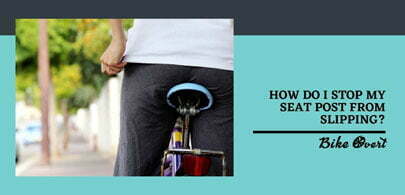
If you are riding a bike for the first time in a while, you are probably experiencing some stiffness in your muscles, soreness in your joints, and even some numbness in your butt. This is all perfectly normal.
What may not be normal is that your seat post might be slipping. This can cause you to lose circulation in your legs and have an uncomfortable ride. Luckily, there are some techniques you can try to fix this problem so that you can enjoy cycling again!
Tightening a seat post is a quick and easy way to ensure that the rider’s saddle height doesn’t shift from its desired settings. One of the most common reasons why a seat post may slip is because it was not tightened sufficiently.
In order to stop the shifting, you will need to loosen up the bolt that connects your saddle to your bicycle frame. Once loosened, you will need to tighten it again with an Allen wrench, which would normally be present with your bike.
Why bike seat clamp won’t tighten?
For those looking for a quick fix to their bike seat clamp not tightening, take a look at the following article. It will discuss what might be the problem and provide solutions on how to fix it.
Bike seat clamps are typically made to tighten and secure the seat in place. This is done so that you can ride your bike with confidence and without any worries about the seat falling off. However, when you try to tighten the clamp it won’t budge and there is no movement at all. What could be wrong? There are a few different issues that could be causing this problem.
first, make sure that the bolt isn’t loose or missing altogether. If the bolt has been removed from its housing then you’ll need to replace it before trying again. The second issue would be if the nut was stripped out of the threads.
Thirdly, check for damage on the frame itself. You may have bent one of the rails or something else happened to cause the seat post to move. Lastly, if none of these things work, then you might want to consider replacing the entire assembly.
How do stabilize the bike seat?
With the increase in biking popularity, many riders are seeking ways to make biking more comfortable. One way is to stabilize the bike seat to help keep a rider safer and more comfortable. Here are a few ways to stabilize a bike seat:
- Put a towel or cushion under the tail bone to support it.
- Use bungee cords or elastic bands to secure the butt against the seat.
- Get an ergonomic saddle that has three different heights for controlling pressure on the nerves.
- Add padding around the hips of the seat so that your body weight doesn’t sit directly on the bones.
- The seat should be made of rubber or other material that can easily withstand pressure. The seat should also be fitted with springs, foam, or other shock-absorbing materials underneath it to absorb any shock that may occur during cycling that will ensure you a comfortable bike riding.
Why won’t the bike seats stay in place?
It’s not your imagination – bike seats just seem to slip around. It can be super frustrating, especially if you’ve just spent 20 minutes trying to get it just right. Believe it or not, there are actually a few reasons why bike seats shift around while you’re cycling, and they should all be taken into account when finding the perfect seat for your needs.
- Your Bike Seat is Too Small For You: If you have an unusually large frame size, then chances are you’ll need a larger-sized seat than what comes stock on most bikes. This means that even though you might think you fit perfectly fine in the seat, you probably don’t.
- The Seat Is Not Level With The Frame: Most of us know how important proper seating position is when riding a bicycle. However, many people fail to realize that their seat isn’t level with the rest of the bike’s components.
- It Doesn’t Fit Properly Around Your Buttocks: Many seats come equipped with padding around the butt area. While this may seem like it would help keep you comfortable while sitting down, it actually makes things worse by creating pressure points where there shouldn’t be any.
What is the best angle for a bicycle seat?
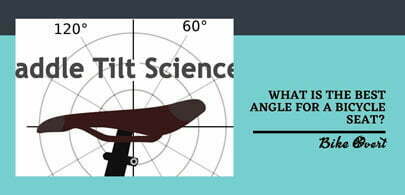
Bicycling is a popular form of exercise and will be an integral part of transportation in the future. The angle that a bicycle seat has is crucial for comfort and proper positioning during riding.
There are four angles that a bicycle seat can have, with the most common being about 17 degrees from the horizontal. Wider seats, which are farther from the ground, are generally preferred over narrower seats as they offer more stability to the rider.
If your seat is too high, you may find it uncomfortable and difficult to reach the ground when you stop. If your seat is too low, you may feel sore on your back and butt after a long ride.
Many people who live in a city, find that their back and neck pain can be eliminated by changing the angle of their bicycle seat. This is because riding with the seat too high creates tension on the neck and back muscles.
However, there are many factors to consider when determining how high or low your bike seat should be. If you have a long torso but short legs, you may want to lower your seat for more comfort while pedaling.
How do you know when to tilt a saddle?
When choosing a saddle, you’ll notice that it will have a tilt option. A common question many riders ask is how to know when they should change the tilt of the saddle.
A saddle is a crucial part of any cyclist’s gear, but often they are tilted in a way that can be uncomfortable. There are a few ways to determine when the saddle needs to be adjusted so you can ride in comfort for your whole ride.
- If you’re riding on rough terrain or pavement with lots of bumps and potholes, then you may need to adjust the angle of your seat post more than if you were just cruising around town.
- When you first start out cycling, you might find yourself leaning forward too much because you don’t yet understand what proper posture looks like. This means that you could benefit from adjusting the tilt of your saddle until you feel comfortable sitting upright.
How do I keep my carbon seatpost from slipping?
The bicycle seatpost is a tube that slides into the frame of the bike and provides a way to adjust the height of the saddle. Although it is usually easier to lower the saddle for shorter riders, some riders have trouble keeping their seatpost from sliding out.
The post can be held in place if it is filled with grease or petroleum jelly. A trick is to use a bit of play dough or modeling clay on a flat surface to create an impromptu press for your seatpost.
A carbon seatpost can be a great choice for riders that are looking to save weight, but they present the challenge of keeping it from slipping. Luckily, there are several simple steps you can take to keep your post in place.
The first step is to clean the post thoroughly to remove any dirt or oils that may have accumulated on it. Next, apply some silicone lubricant such as WD-40 or a similar product to help prevent slippage and make sure the post has plenty of room to move freely within its housing and finally, use a small amount of thread sealer to ensure the threads stay tight when tightened down.
How do you tighten a loose bike seat?
One question some bicycle riders ask is, how do you tighten a loose bike seat? Unfortunately some bike seats are made to be adjustable, but over time the adjustment loosens. The first step is to identify if your bike seat is adjustable or not.
If it is, loosen the screws on the back of the seat and push on the seat posts to see if it can be tightened. If not, you may need to buy a new bike seat.
You should also check that all bolts are properly tightened before riding. Tighten them with an Allen key or wrench. you can see it in the video.
What grease should I use on my bike?
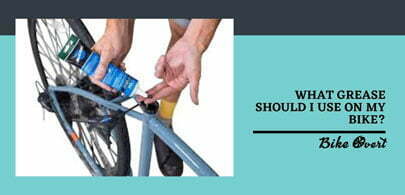
There are many options for bike seat grease, but how do you know which one is right for your bike? It’s important to remember that the best way to keep your bike seat clean is to never let it get dirty. You could choose a greaseless bike seat, or you can use a water-based lubricant to protect the seat from wear and tear caused by weather and sweat.
Grease can be used to add a protective layer on the saddle of a bike. Choosing the correct grease for this task is crucial, as using grease that is too thick or not compatible with rubber will cause sweat and friction when it is in contact with the saddle.
The amount of grease that should be applied depends on how much time one spends riding their bike. A good rule of thumb is to apply enough grease to the saddle so that it does not slip out of place during use.
Conclusion
In conclusion, bikes do not have the perfect balance of weight distribution on the seats which forces them to tilt. This can be remedied by adjusting your seat height and adjusting your seat angle.
If you are having trouble with your seat tilting, one of the first things you should do is change your seat height. You should start this process by setting your seat height to your inseam length.
The majority of the time, your bike seat is simply tilted because it has been placed in a position that does not match up with your height. We recommend adjusting your seat so you can feel comfortable and perform at your best.

